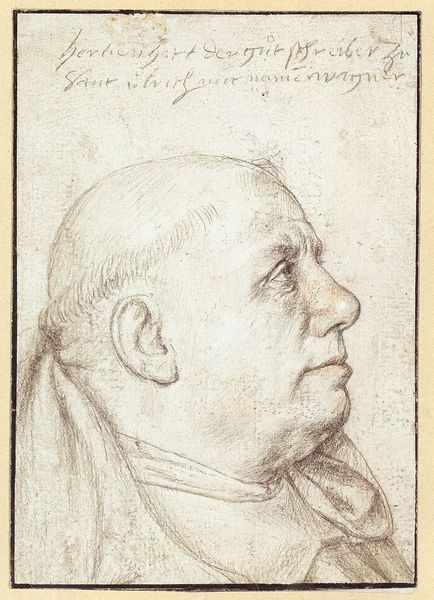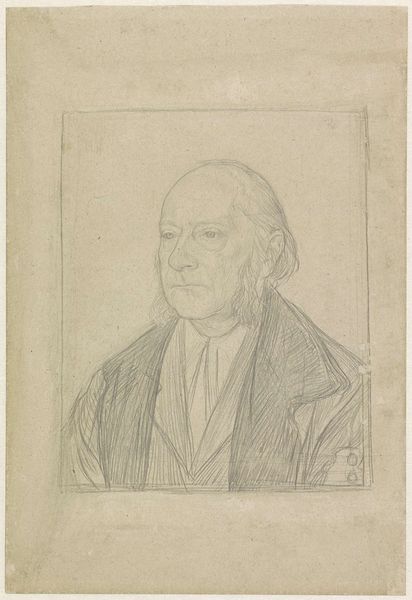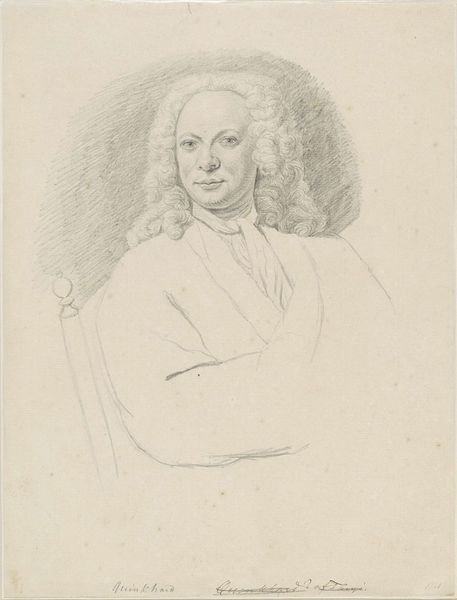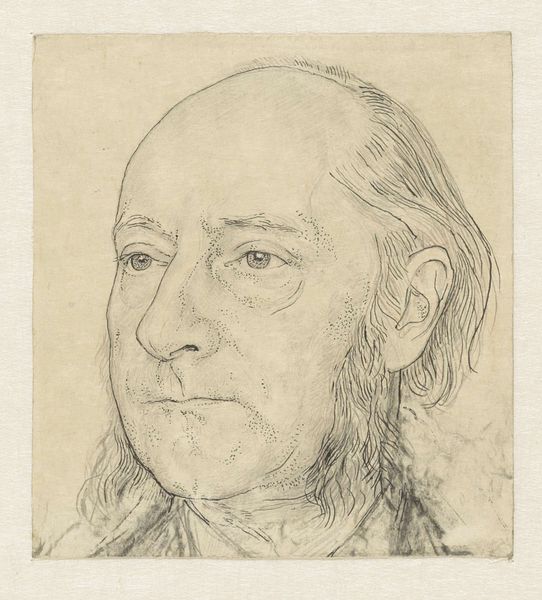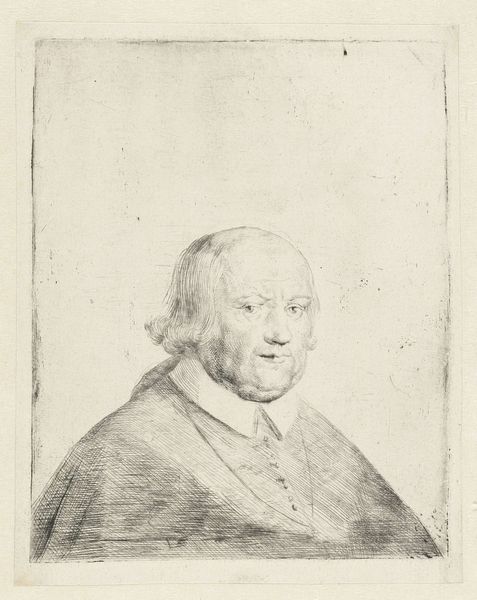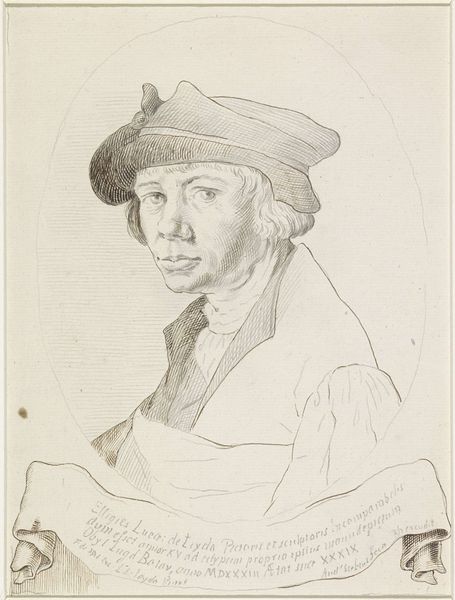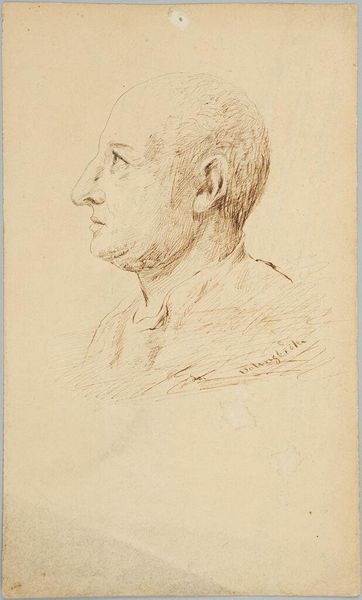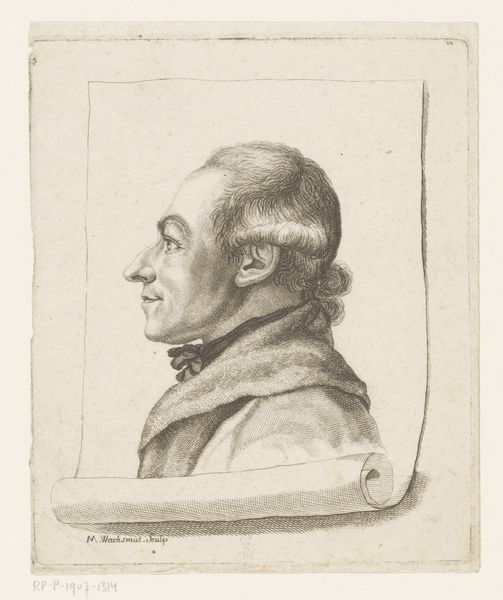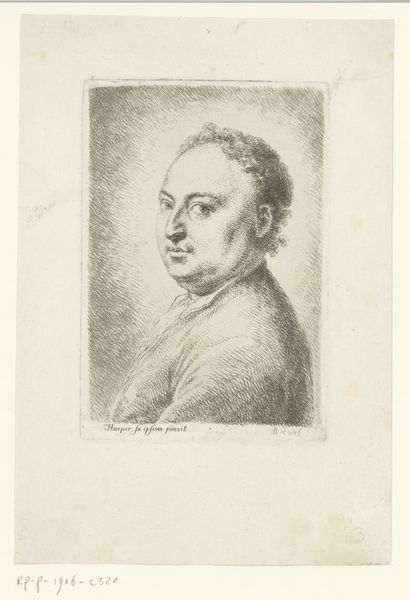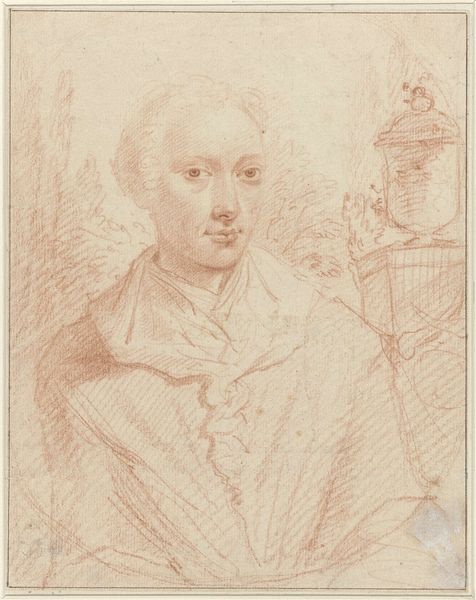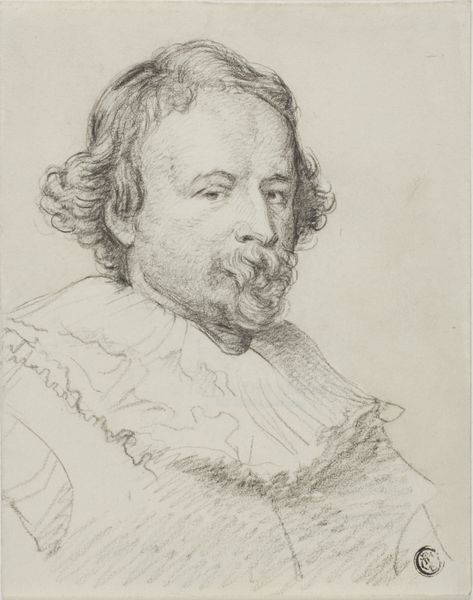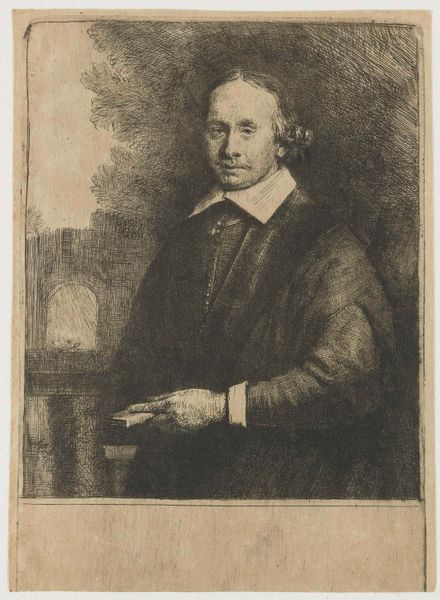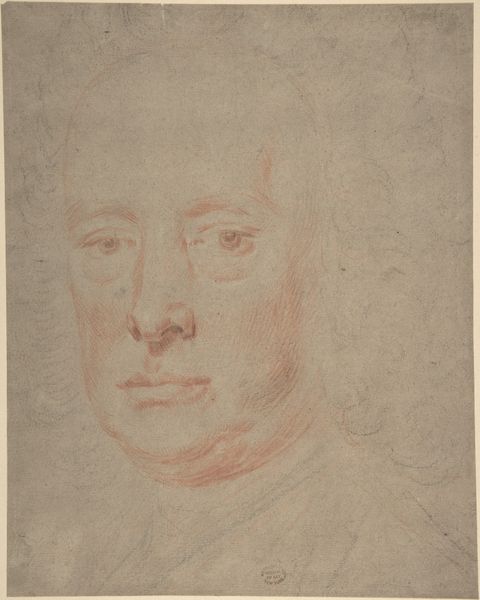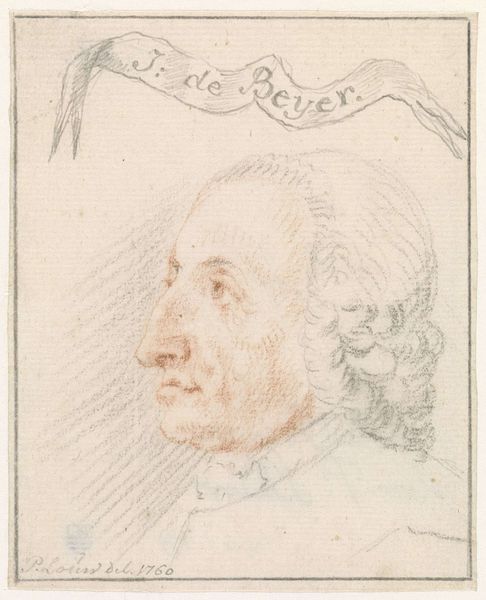
Dimensions: height mm, width mm
Copyright: Rijks Museum: Open Domain
Editor: Here we have "Portret van Pieter van der Eyk," a pencil drawing made in 1768 by Joannis Jacobus Bijlaert, currently housed in the Rijksmuseum. There's something incredibly intimate about this portrait; you can almost feel the texture of the paper. What do you see when you look at this, beyond just a face from the past? Curator: Oh, but it *is* so much more than just a face, isn't it? For me, drawings always feel like whispers from history. Look at the hatching, the almost frantic energy in those lines—you get a sense of the artist wrestling with capturing something fleeting, the very essence of Pieter van der Eyk. Do you feel that urgency? Or is it just me romanticizing old pencils? Editor: I get it! There is a certain rawness that’s interesting, because Baroque portraits were so idealized, yet this feels so real. It's like Bijlaert wanted to show the man, wrinkles and all. Curator: Exactly! And maybe Bijlaert didn't have the budget to get paints, and so grabbed whatever they could find. Imagine him, furiously sketching to capture Pieter's likeness before the light changed, before the mood shifted. It’s realism colliding head-on with the Baroque love of drama. What does Pieter seem to be thinking, would you say? Editor: He seems... resigned, maybe a little tired? Not the commanding presence you often see in portraits of the era. Curator: I agree! And maybe *that's* the revolution here. Bijlaert offers a moment of quiet introspection, a glimpse behind the powdered wigs and posed smiles. It reminds us that everyone, even the powerful, has their quiet moments, their doubts. Editor: It makes the Baroque period feel more… human. I never thought a pencil sketch could hold so much emotion! Curator: Well, isn’t that the magic of art? To surprise us, to make us see the familiar in a brand new light, or should I say shadow?
Comments
No comments
Be the first to comment and join the conversation on the ultimate creative platform.
